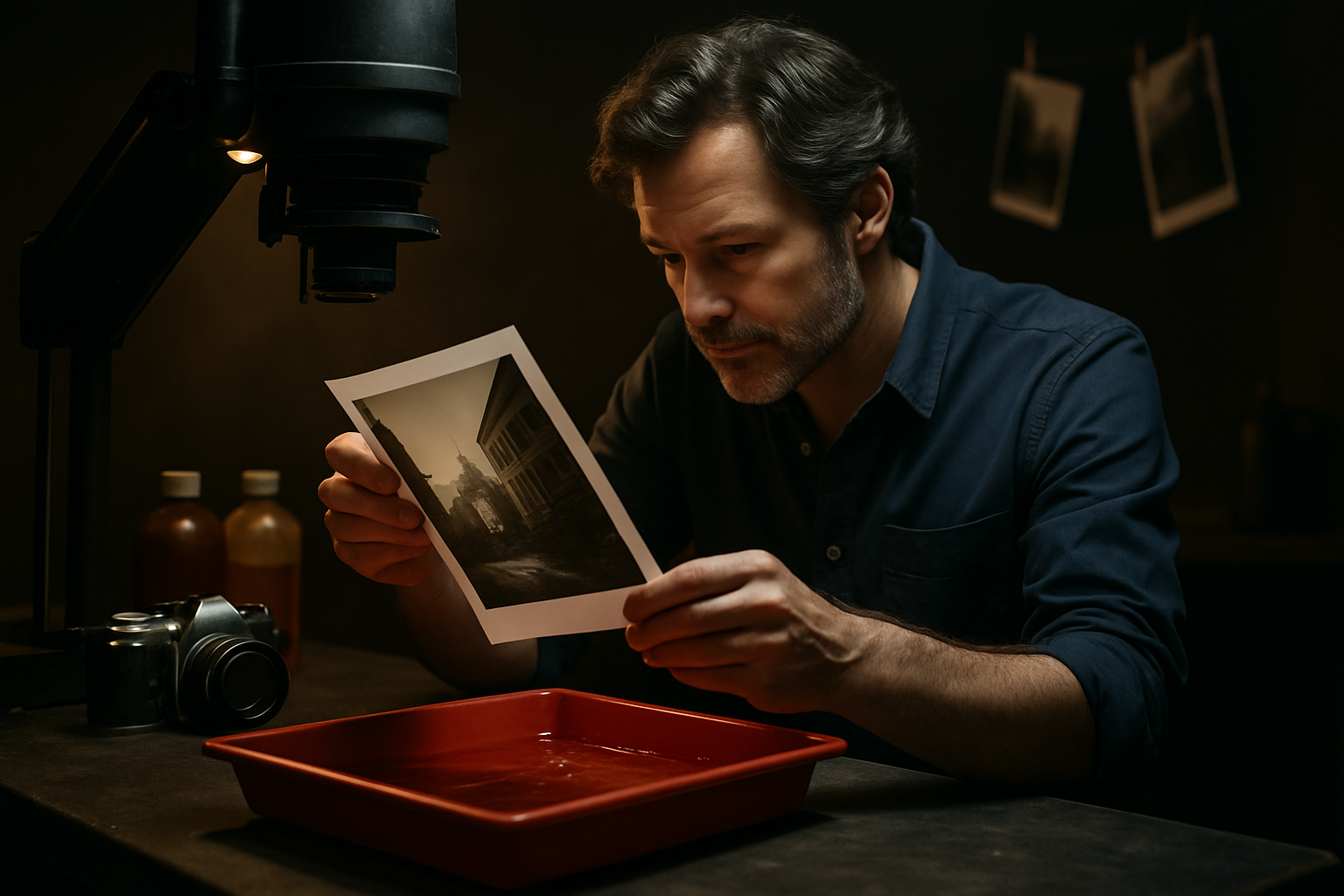Title: The Resurgence of Analog Photography in the Digital Age
In an era dominated by digital technology and instant gratification, a surprising trend has emerged in the world of photography. Analog photography, once considered obsolete, is experiencing a remarkable revival. This resurgence is not merely a nostalgic nod to the past, but a deliberate artistic choice that is reshaping the landscape of contemporary visual arts. From professional photographers to enthusiastic amateurs, many are rediscovering the unique charm and creative possibilities offered by film cameras and darkroom processes.

A Return to Craft
Analog photography demands a level of skill and patience that has been largely lost in the digital age. Photographers must carefully consider each shot, as film is limited and expensive. This constraint fosters a more thoughtful approach to composition and lighting. The darkroom process, with its chemical baths and precise timing, transforms photography into a true craft. Many photographers find this hands-on approach deeply satisfying, offering a tactile experience that digital photography lacks.
The Aesthetic Appeal
The visual qualities of film photography continue to captivate both creators and viewers. Film produces a distinctive look characterized by rich colors, subtle tonal gradations, and a unique rendering of light. This aesthetic has become increasingly sought after in an era where digital images often feel sterile or overly processed. Fashion and fine art photographers, in particular, have embraced analog methods for their ability to create images with depth, texture, and a timeless quality.
Educational Renaissance
The resurgence of analog photography has led to a renewed interest in traditional photographic techniques within educational institutions. Many art schools and universities are reintroducing or expanding their film photography programs. Students are eager to learn the fundamentals of exposure, developing, and printing, skills that deepen their understanding of the photographic process regardless of the medium they ultimately choose to work in. This educational shift is ensuring that analog techniques are preserved and passed on to future generations of photographers.
The Intersection of Analog and Digital
While purists may advocate for a complete return to analog methods, many photographers are finding innovative ways to blend analog and digital techniques. Film negatives are often scanned and digitally processed, combining the unique qualities of film with the convenience and flexibility of digital editing. This hybrid approach allows photographers to leverage the strengths of both mediums, creating work that is both nostalgic and contemporary.
The Role of Social Media
Paradoxically, social media platforms have played a significant role in the revival of analog photography. Instagram, in particular, has become a hub for film photographers to share their work and connect with like-minded enthusiasts. The platform’s square format and filters, which often emulate the look of vintage film, have helped to popularize the aesthetic of analog photography. This online community has fostered a new generation of film photographers and created a market for analog equipment and services.
The Environmental Consideration
As environmental concerns become increasingly pressing, some photographers are turning to analog methods as a more sustainable alternative to digital photography. While film production and processing do have environmental impacts, the longevity of film cameras and the reduced energy consumption compared to constant digital upgrades and cloud storage present an interesting counterpoint to the perceived eco-friendliness of digital photography. This aspect of analog photography aligns with broader trends towards sustainability and conscious consumption in the arts.
The Future of Analog in a Digital World
As the analog photography movement continues to grow, it raises questions about the future of the medium. Will it remain a niche interest, or could it challenge the dominance of digital photography in certain sectors? The industry has responded to the renewed demand, with both established manufacturers and new startups producing film, cameras, and related equipment. This economic ecosystem suggests that analog photography is more than a passing trend, but a viable and enduring form of artistic expression.
In conclusion, the resurgence of analog photography represents a fascinating counter-current in our increasingly digital world. It speaks to a desire for authenticity, craftsmanship, and tangible experiences in art and creativity. As photographers continue to explore and innovate within this medium, analog photography is likely to play an important role in shaping the future of visual arts, offering a unique perspective and methodology that complements and challenges digital norms.





